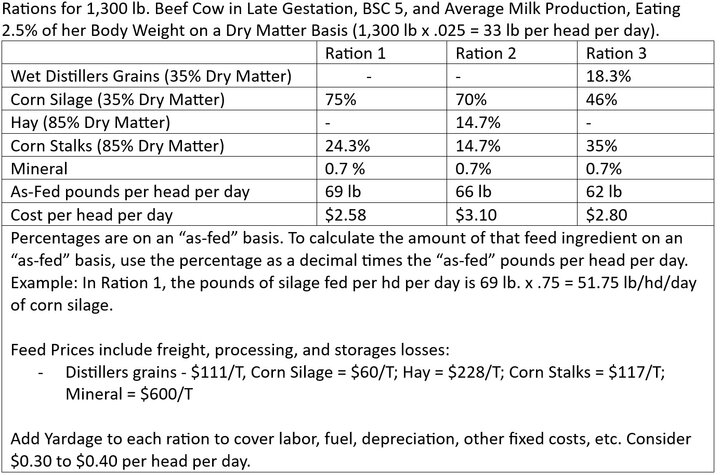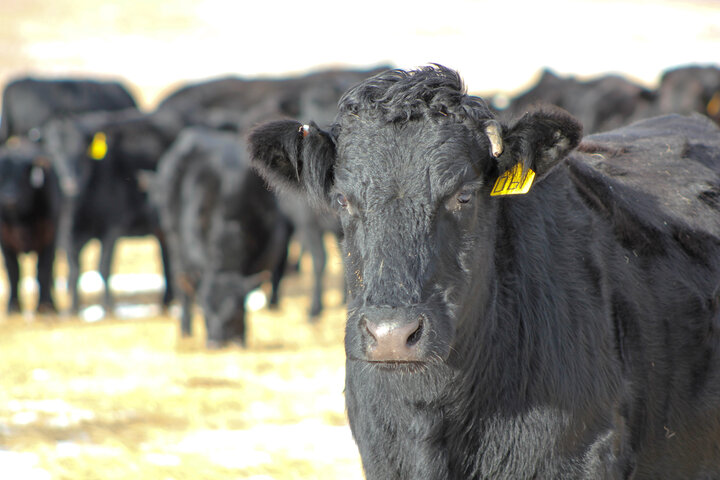As you prepare to inventory feeds for feeding the beef cow this winter, corn silage may be an option. In last month’s BeefWatch, the article, “Is That Corn Crop Worth More as Silage or Grain?” walks through the calculations to determine price of corn silage standing in the field, chopped and packed in the silo, and corn silage delivered to the bunk. If the price of corn is $5.00 per bushel, corn silage delivered to the bunk with 10% shrink is $60.83.
The nutrient quality of corn silage can vary, so sample and send in for an analysis. Sampling corn silage for a nutrient analysis can be a challenge. Wait until after the silage bunker has gone through the 21-day fermentation process and after the bunker has been opened so that a sample can be taken at three locations across the bunker face (left side, middle, and right side). At each sample location across the face, take three separate samples (top, middle, bottom). The following video demonstrates a proper sampling technique for corn silage: https://www.youtube.com/watch?v=VabSZnKoqho.
“Normal” corn silage is usually 35% dry matter (65% moisture), 70% TDN and 10% crude protein. Drought-stressed corn silage is usually 85% to 95% the nutritive value of normal corn silage. Nitrates in drought stressed corn silage are reduced 40% to 60% once the silage has gone through the 21-day fermentation process. When sending a sample in for analysis, request a test for nitrates.
Items needed when considering corn silage as a feed source for beef cows:
- A front-end loader to get silage out of the bunker and into the mixer wagon.
- Feed wagon or mixer wagon to deliver the feed.
- Scales for weighing ingredients.
• Does the mixer wagon have a scale?
- Feed bunks to reduce waste.
• Will the feed be fed in a bunk or on the ground? Feeding losses will be between 10% and 20% when feeding on the ground and need to be added to ration costs.
Following are some rations for a 1,300-lb beef cow that is in late gestation and has average milk ability. The 1,300-lb cow will consume daily about 2.5% of their body weight on a dry matter basis of a high-quality feed. A 1,300-lbcow will eat 33 lb/hd/day (1,300 lb x .025 = 32.5 lb) on a dry matter basis. Cows eat feed that include water, so water needs to be accounted for when the feed is fed. Determining the water contribution by corn silage is an important step and will be shown next. As an example, if forage is 35% dry matter, then water content is 65%. If the cow eats 33 lb/hd /day on a dry matter basis, the amount of feed delivered to include the water is 94 lb/hd/day (33 lb of dry matter/.35 = 94 lb/hd/day). The cow can eat that much but remember that 61 pounds of that is water.
Mineral is included in the rations at 0.7% of the ration. A yardage cost needs to be added to cover labor, depreciation, fuel, etc. For these expenses, add $0.30 to $0.40 per head per day to the ration costs on a per head basis.
Any time hay is included in the ration, the cost of the ration increases substantially when hay is priced at $180/T, freight, $15/T grinding cost and 10% storage loss. Stalks are priced at $80/T but by the time freight, grinding, and storage losses are accounted for, cost is $117/T.
To ensure a good mix of the feed ingredients, design rations that are not greater than 65% dry matter. If not, rations will be too dry to get a uniform mix. Water could be added to rations that are dry to get a uniform mix.
These rations are bulky, so make sure there is enough bunk capacity if the rations are fed once daily. If there is not enough bunk capacity, rations need to be delivered twice daily.
This article is being written in mid-August and, in Nebraska, there is a lot of hay and alfalfa being cut and wrapped. How this effects feeds prices in the fall are yet to be determined.

Interviews with the authors of BeefWatch newsletter articles become available throughout the month of publication and are accessible at https://go.unl.edu/podcast. You can subscribe to the BeefWatch newsletter here: http://go.unl.edu/Beefwatch_subscribe

